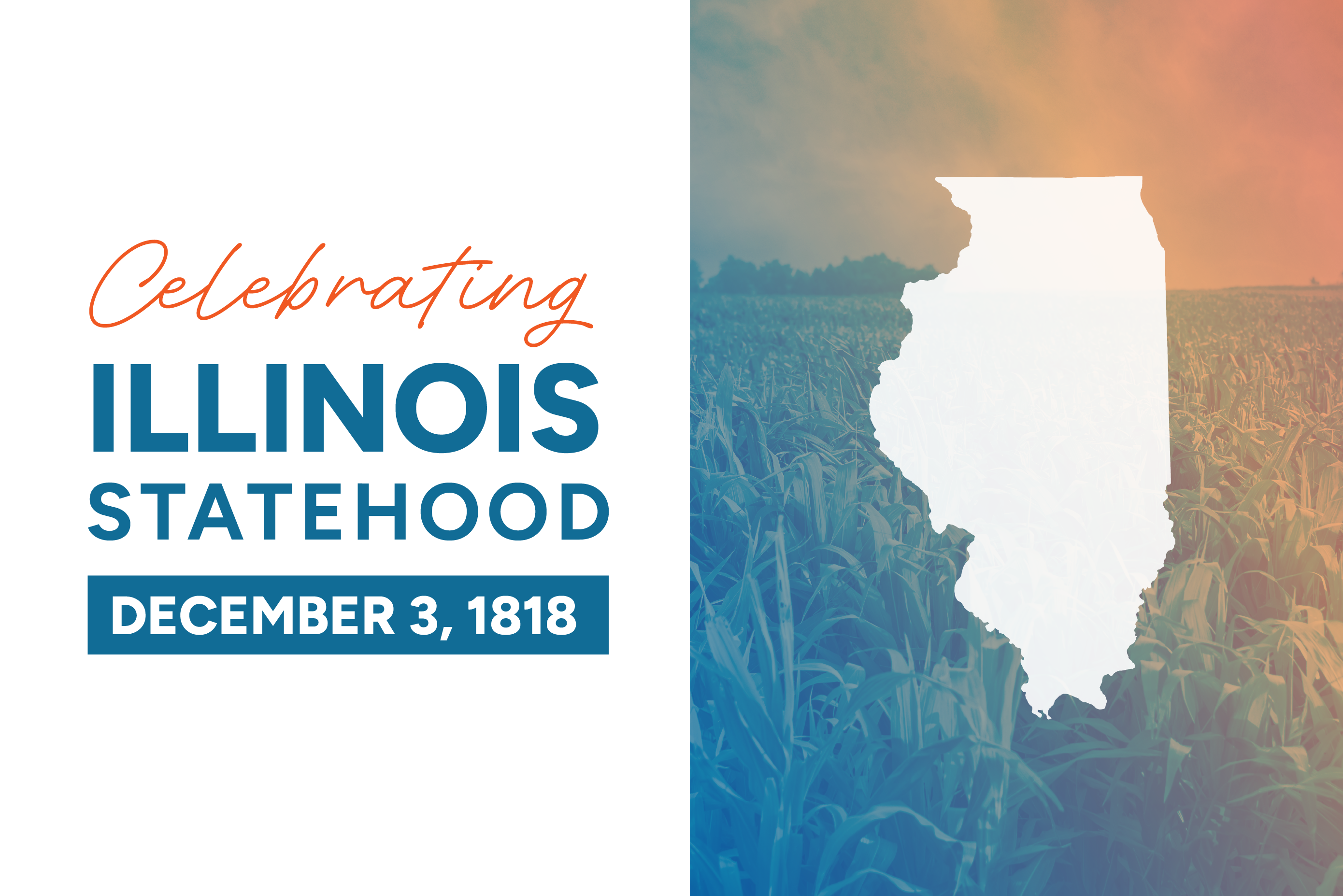On December 3, 1818, Illinois was admitted as the 21st state of the United States. That’s why on December 3rd of every year, we celebrate Illinois Statehood Day. To celebrate, let’s take a look back on the early history of Illinois and trace its journey to becoming a state.
The area was originally inhabited by various Native American tribes, including the Illiniwek, from whom the state derives its name. European exploration began in 1673 when French explorers Jacques Marquette and Louis Jolliet traversed the region, claiming it for France. The French established settlements such as Cahokia in 1699 and Kaskaskia in 1703, which became centers of trade and missionary work.
Following the French and Indian War, the 1763 Treaty of Paris ceded control of Illinois to the British. However, British governance was short-lived; after the American Revolution, the 1783 Treaty of Paris transferred the territory to the United States. Initially part of the Northwest Territory, Illinois was later included in the Indiana Territory in 1800.
Formation of the Illinois Territory
As the population grew, residents sought more localized governance. In response, Congress established the Illinois Territory on February 3, 1809, separating it from the Indiana Territory. This new territory encompassed present-day Illinois, Wisconsin, and parts of Minnesota and Michigan. Kaskaskia was designated as the territorial capital.
Ninian Edwards was appointed as the first territorial governor. Under his leadership, the territory’s infrastructure and legal systems began to take shape, setting the stage for future statehood.
By 1818, the Illinois Territory’s population had grown sufficiently to consider statehood. A constitutional convention was convened in Kaskaskia in August 1818, where delegates drafted the state’s first constitution. This document established the framework for Illinois’s government and was instrumental in its admission to the Union.
On December 3, 1818, President James Monroe signed the resolution admitting Illinois as the 21st state. At that time, the state’s population was approximately 35,000, with most residents living in the southern regions.
Challenges and Growth
Despite its new status, Illinois faced significant challenges. The vast prairies presented obstacles to agriculture due to the thick sod, which was difficult to plow with existing tools. However, the invention of the steel plow by John Deere in 1837 revolutionized farming, making the fertile land more accessible and leading to a boom in agricultural production.
The state’s early years were also marked by debates over slavery. While the Northwest Ordinance prohibited slavery, enforcement was lax, and some settlers brought enslaved people into the territory. The 1818 constitution allowed for existing indentured servitude contracts to continue, leading to tensions between pro-slavery and anti-slavery factions. In 1824, a referendum to legalize slavery was defeated, solidifying Illinois’s status as a free state.
The development of transportation infrastructure was crucial to Illinois’s growth. The construction of the Illinois and Michigan Canal, completed in 1848, connected the Great Lakes to the Mississippi River, facilitating trade and migration. Additionally, the expansion of the railroad network in the mid-19th century transformed Illinois into a transportation hub, with Chicago emerging as a central node.
To learn more about the rest of the history of Illinois, visit the Illinois Historic Preservation Division’s History of Illinois Timeline.
